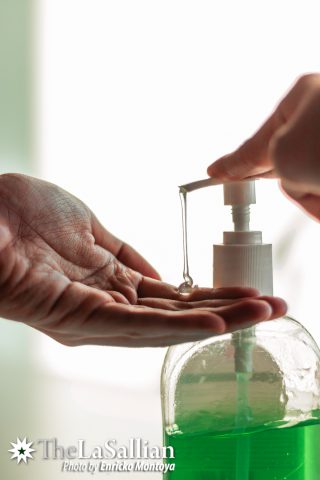Every May fifth, the World Health Organization (WHO) conducts the Clean Your Hands campaign, calling for the observance of correct hand hygiene practices and better accessibility to relevant facilities and resources. In 2020 and 2021, the campaign was conducted in the context of a global health crisis, with a reiteration of approved techniques in hand sanitation practices. Guidelines were given on both hand-washing with soap and the use of alcohol-based hand rubs, with the conclusion: “Conducting hand hygiene at the right time, using the right technique, with either alcohol-based hand rubs or soap, water and disposable/clean towels is critical.”
Both soap and alcohol are sanitizers, but as their components differ, so do their mechanisms. How exactly do soap and alcohol work to remove pathogens, and how do alcohol-based sanitizers, such as gel and disinfectant wipes, compare?
A closer look
Dr. Gil Penuliar from the Institute of Biology at the University of the Philippines explains that soap ingredients, when activated through hand-washing, “act as a surfactant and emulsifier that kill and remove most microorganisms by disorganizing and dissolving their membranes and washing germs off with water.”
Soap is composed of molecules that are highly attracted to water at one end and highly attracted to lipids—a major component of pathogens like viruses and bacteria—at the other end. Molecules that have this kind of structure are called surfactants. The end that binds to lipids kills pathogens by destroying their membranes, and the end that binds to water is what allows these pathogens to be washed away with water. This latter property, making two normally unmixable liquids washable using one another, is what it means to be an emulsifier, which is a type of surfactant.
Regarding alcohol and other alcohol-based products like sanitizing wipes and gels, Penuliar says that they kill germs by denaturing proteins critical for cell survival and by dissolving membrane lipids. Like soap, alcohol also reacts with membrane lipids to destroy pathogens, but it cannot act as an emulsifier, making the removal of the pathogens from the hands require physical, mechanical action—in other words, scrubbing.
From the above, it can be seen that both soap and alcohol are not effective on their own, requiring water or proper scrubbing technique. This is what Penuliar means when he says that the efficacy of sanitizing agents is affected by whether they are used properly or not. Under the assumption that these sanitizers are used properly, he ranks soap as most effective, followed by alcohol, hand wipes, then finally, hand sanitizing gels. Regarding alcohol and alcohol-based products such as wipes and gels, he explains that the closer the alcohol concentration is to 70 percent, the better.

Sanitizers in practice
For someone who wishes to minimize the transmission of pathogens, Penuliar offers suggestions focusing on the frequency one washes their hands.
He adds, however, that in the absence of soap and water, alcohol-based sanitizers with an alcohol concentration of 70 percent are good alternatives. Penuliar also notes that UV light sanitizers are available for disinfecting inanimate objects and surfaces.
Penuliar says that there should be no major concerns on the regular long-term use of hand sanitizers, but warns that too much use may affect the condition of the skin. In addition, alcohol-based products used in excess may cause skin drying and irritation. Certain ingredients in some sanitizers, like triclosan, can also enter waterways, harming aquatic life and causing bacteria to become resistant to antimicrobials.
Overall, both soap and alcohol are effective when used right. Soap needs water, and both need the proper hand scrubbing technique. The WHO reminds that this technique includes not just the palms and fingers, but also the back of the hand, between the fingers, under fingernails, and down to the wrist, with a scrub of 20 to 30 seconds for alcohol products and 40 to 60 seconds for soap and water. And while this seems difficult to remember, they are words to live by given the current global health crisis.
